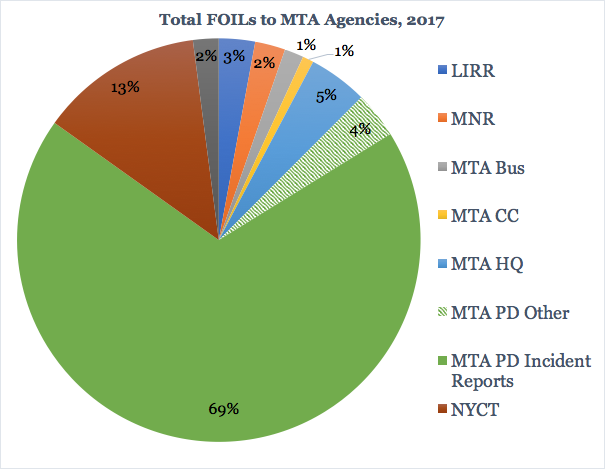A Simple First Step to Help the MTA Re-Establish Credibility
Op-Ed originally published in Gotham Gazette
The Metropolitan Transportation Authority (MTA) is teetering on financial collapse and still struggling to overcome a meltdown in subway service and collapse in bus ridership. No one doubts that the MTA has serious problems and riders are suffering. But before the State Legislature approves tens of billions of new funding, the MTA needs to show it is serious about improving its decision-making and transparency.
Politically, the MTA has met the enemy: its lack of credibility.
Former Chair Joe Lhota at the MTA Board’s October 2018 meeting acknowledged this, saying, “I’m aware that before we can credibly appeal for billions of dollars of public money, we must continue to advance a reform agenda.” New York City Transit’s Fast Forward plan is a whopping $40 billion appeal and promise to improve the subways and buses. Andy Byford, New York City Transit’s president and the plan’s architect, in unveiling the plan stated that NYCT is working on the “rollout of a new transit organization – one that is built around a customer centric, continuous improvement model, one that emphasizes transparency and accountability, and one that going forward delivers on its promises.”
One of the easiest ways for the MTA to show that it is serious about improving transparency is to bring its Freedom of Information Law (FOIL) process into the 21st century. This means putting it fully online with an OpenFOIL website, modeled on the successful platforms already used by the Port Authority of New York and New Jersey and the City of New York, and as developed by the Obama administration for federal agencies.
The idea behind FOIL is that the public can ask for and get information that government decisions are based on — information that we, the public, paid for with our taxes (and, in some cases, fares and tolls). Ideally, much of this information should already be online in an open format that is easy to search, download and use. But in 2018, the MTA is still a long way from putting important information online and in accessible formats. For journalists, researchers, and watchdogs that seek to hold the MTA accountable, that means FOIL is often the only way to get certain public records.
Unfortunately, the way the MTA implements FOIL is not working for either MTA staff or the public. A recent report by my organization, FOIL that Works: Increasing MTA transparency and accountability by putting FOIL online, dug into the MTA’s FOIL process and found a dysfunctional and fragmented mess.
The MTA received nearly 9,000 requests in 2017 (see chart below), with those inquiries handled differently among its eight separate agencies. New York City Transit still responds to many FOIL requests with paper letters instead of by email. Complicated requests can take over a year to fill, and most FOILers don’t have the legal resources to take the MTA to court to speed things up. FOIL requests might be deemed “closed” by agency staff, but this does not mean the requestor actually received the information sought.

There is a better way to do things, and fortunately for the MTA, it doesn’t have to look far. The Port Authority in 2012 revamped its freedom of information access policy, and created an online portal for FOI requests. This reform was led by Pat Foye, then the Port Authority executive director, and now the MTA’s president, as well as Scott Rechler, who has since switched boards to the MTA. Now, once a record is released to the public, it goes online in a searchable portal for everyone else to benefit from. This saves both the Port Authority staff and the public time – a win-win.
The City of New York also has an Open Records web portal, which eases the FOIL process for the public and agency staff. The code for the portal is available in open source, which is essentially free for the MTA to adopt and expand for its needs.
The MTA also doesn’t segregate information requests the way it should. As shown in the chart above, in 2017 two-thirds of MTA FOIL requests – more than 6,000 – were for police incident reports. But these don’t have to go through FOIL. The state Department of Motor Vehicles has an in-house online collision reports portal where the public can privately request their own incident reports, and the MTA should do the same. The MTA’s FOIL staff should focus on other types of FOIL requests to ensure that they don’t languish for so long.
OpenFOIL and an online police incidents portal for the MTA are supported by 13 other city, state, and national organizations – a diverse group including good government, transportation, freedom of information, and environmental organizations including the National Freedom of Information Coalition, Riders Alliance, League of Women Voters of the City of New York, NYPIRG Straphangers Campaign, and Environmental Advocates of New York.
The MTA can and should put FOIL online on its own. But should it not, the public has another important backstop – the state Legislature. Newly elected and re-elected legislators, in particular Senate Democrats, have promised to tackle MTA reform, and if the MTA can’t reform itself, they should require it. Passing legislation requiring OpenFOIL for the MTA is a great start for legislators to take their oversight role seriously.
